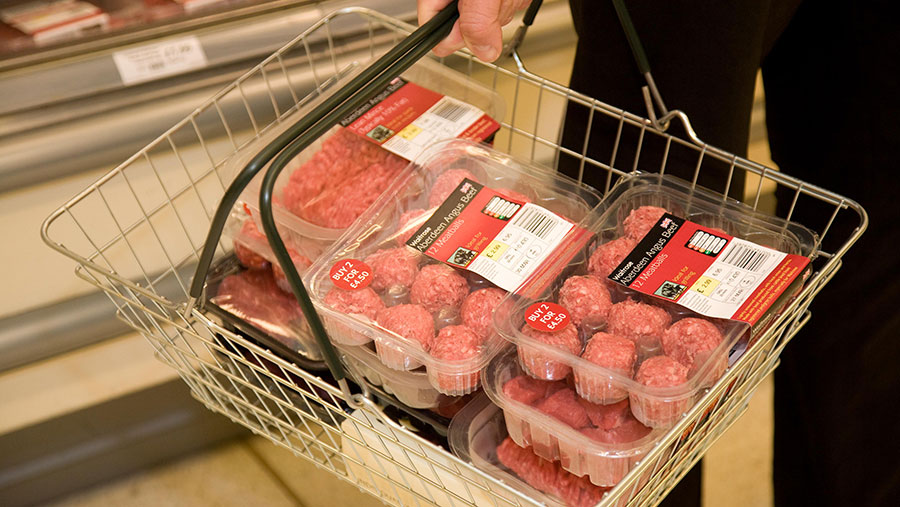FW Opinion: Food inflation pain could prompt ELM scheme rethink
 © Tim Scrivener
© Tim Scrivener In the moments when political types are not discussing how long it will take for the extended list of Downing Street party accusations to bring down Boris Johnson, they’re discussing when the cost-of-living crisis could bring him down instead.
The omens for keeping money in your bank account in 2022 are not good – the year has started with a fresh wave of price increases to follow on from last year’s hikes.
Research conducted for the Daily Mail in the five major supermarkets picked up 4,400 price increases on products since the turn of the year – well above the more typical 2,700.
It included a 12% increase for beef mince, 9% for milk and 8% for eggs.
See also: FW Opinion: 2022 set to be year we get farm policy clarity
For farmers, it is a bitter moment. Long years since first asking supermarkets to pass on rising costs to consumers so that food production could be financially sustainable, it has finally happened, but only after the increased income has, in many cases, been eclipsed by rising input costs.
(Something Defra secretary George Eustice failed to appreciate when he said recently that gross margin increases are often offsetting direct payment reductions).
None of this provides any comfort to the average shopper, of course, and if the cost of living continues to rise sharply, it may lead to a backlash.
This could either be via politicians responding to the public mood, or by direct action from citizens.
In 1973, rising meat prices saw women across the US take to the streets to protest this assault on their household budgets.
Despite all the noise from the anti-meat lobby in recent years, perhaps things have changed less than imagined. We still have a population that largely wants to eat meat for as little money as possible, and will blame the government if it meddles with that
So many of the burger-loving nation boycotted beef for an entire week it forced President Nixon to cap meat prices on the shelf and reverse schemes for farmers to put land into set-aside schemes.
Time magazine cheerfully said it was the most successful campaign women had led since Lysistrata – an ancient Greek comedy where wives withheld sex from their husbands to help end the Peloponnesian War.
Are consumers any more willing to tolerate price rises some 50 years later, or will they even turn their backs on meat for alternatives?
They are still opposed to any government intervention that would see meat prices increase, according to National Food Strategy author Henry Dimbleby, who gave an excellent presentation to the Oxford Farming Conference last week.
“If you tax meat it would bring the government down,” was, he said, the clear message from focus groups when asked whether the government would do more to reduce meat consumption for environmental reasons.
And you only have to visit a supermarket to see that most meat alternative products are miles away from denting consumption of the real deal, as they’re far more expensive.
So despite all the noise from the anti-meat lobby in recent years, perhaps things have changed less than imagined.
We still have a population that largely wants to eat meat for as little money as possible, and will blame the government if it meddles with that.
This makes the conclusion this week by the Public Accounts Committee that Defra still hadn’t considered how the Environmental Land Management (ELM) scheme would affect food security even more interesting.
As long as it is just farmers and environmentalists complaining, officials can dismiss it as self-interested posturing from both sides.
But if price hikes became linked to ELM and other environmental schemes rewarding taking land out of production and stifling home-grown food, it could be a potent political weapon that would detonate the government’s current determination to let markets regulate food production.
Exactly how they could intervene to reduce prices, and whether it would leave farmers better off, remains the billion-pound question.

